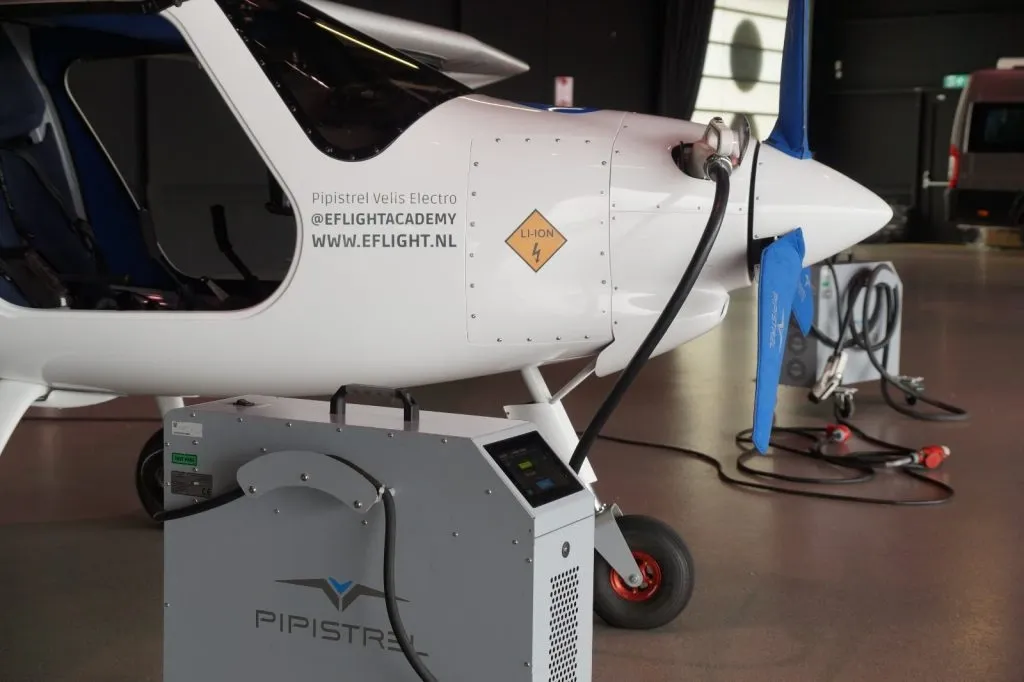Electric flying sounds futuristic, but battery-powered aircraft are already flying around our country. Dutch companies are building larger battery-powered planes: quieter, cleaner and possibly cheaper than flying on kerosene. Can they help make aviation more sustainable?

A Pipistrel aircraft on the charger at the hangar in Teuge. Photo: Wilke Wittebrood
The world's only electric aircraft
.The Pipistrel Velis Electro, as the aircraft is called in full, is the first and currently only battery-electric aircraft in the world to be officially certified by aviation authorities EASA and FAA. That means it is allowed to fly in Europe and America. The aircraft is currently used primarily for flight schools.
One of the places where pilots in training can experience what it is like to fly on batteries is the E-Flight Academy in Teuge, of which Van Vliet is co-owner. KLM pilots, for example, complete electric flight hours at the flight school. As of November this year, so does Transavia, which has a stake in the company through investment vehicle Transavia Ventures.
For commercial flights, the Pipistrel is not suitable. A fully charged aircraft can fly for 50 minutes, plus 10 minutes of reserve. After that, it must spend an hour on the charger. Only two people can fit in it, including the pilot. In that respect, the name is well chosen: Pipistrel is Slovenian for "dwarf bat. The company behind the e-planes is originally Slovenian, although it is now owned by American Textron Aviation.
The E-Flight Academy owns five of these aircraft, which together have already made more than 6,300 electric flights. 'A total of seven are flying in the Netherlands,' says Van Vliet. 'These account for 50 percent of all electric flight movements worldwide. This makes our country the absolute leader in e-flying.'